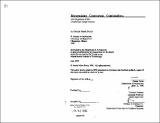| dc.contributor.advisor | Thomas Chastain. | en_US |
| dc.contributor.author | Ferris, Denise Marie | en_US |
| dc.contributor.other | Massachusetts Institute of Technology. Dept. of Architecture. | en_US |
| dc.coverage.spatial | n-us-sc | en_US |
| dc.date.accessioned | 2011-10-17T21:13:05Z | |
| dc.date.available | 2011-10-17T21:13:05Z | |
| dc.date.copyright | 1990 | en_US |
| dc.date.issued | 1990 | en_US |
| dc.identifier.uri | http://hdl.handle.net/1721.1/66326 | |
| dc.description | Thesis (M. Arch.)--Massachusetts Institute of Technology, Dept. of Architecture, 1990. | en_US |
| dc.description | Includes bibliographical references (p. 113-116). | en_US |
| dc.description.abstract | This thesis is ultimately an exercise in understanding the processes of transformation in an urban environment How can one determine the relevant physical attributes of an existing fabric for inclusion in new construction as a way towards building greater continuity? For this investigation I have chosen to examine and work within the context of Charleston, South Carolina. Charleston is a city over two hundred years old, which now supports a very different social and economic structure from that of its original physical manifestation. There exists an explicit, regulating set of principles that underlay the historic built context. Considering that building technologies, means and methods have changed along with our notions of spatial requirements (clearly demonstrated through already existing transformations), it does not seem appropriate that one would duplicate the physical reality of buildings produced in the distant past. Equally inappropriate are current trends of producing veneered images of the past. If these solutions for generating new structures are to be avoided, existing buildings and the resultant spatial relationships defined must be thoroughly understood. Here then is an investigation of Charleston's spatial structure from which certain design parameters will be extracted towards the generation of several design projections. Spatial structure embodies those elements which define and articulate the sizes (and therefore capacity) and particular qualities of space. for example: whether open or closed. vertical or horizontal. light or dark, collective or private, indoor or outdoor, etc. Having lived in Charleston for three years, the particular solutions put forth will also be driven by my biased understandings of what it means to live in Charleston's urban environment. | en_US |
| dc.description.abstract | (cont.) The method is one of direct observation using photographs, sketches and measured drawings towards understanding patterns of use, qualities of light and essence of place. In organizing these observations this thesis relies on the levels of spatial definition derived by N. J. Habraken. The levels include: -- that of the city: large scale networks, interventions and landscape attributes, i.e. streets, oceans. rivers, marshes, railroads, city block structures. etc. -- that of the tissue: within the block structure the system of buildings and spaces -- that of the site -- that of the building -- that of the building elements The investigation at all levels includes understanding public vs. private space. light as an organizer of space, the means for spatial definition and the range of forms and sizes of all physical elements. The thesis organization is as follows: -- initial observations at the size of the city and the tissue -- observations at the size of the site and the building -- design projections -- analysis of design projections as a means towards understanding primary spatial definitions within the Charleston context. | en_US |
| dc.description.statementofresponsibility | by Denise Marie Ferris. | en_US |
| dc.format.extent | viii, 123 p. | en_US |
| dc.language.iso | eng | en_US |
| dc.publisher | Massachusetts Institute of Technology | en_US |
| dc.rights | M.I.T. theses are protected by
copyright. They may be viewed from this source for any purpose, but
reproduction or distribution in any format is prohibited without written
permission. See provided URL for inquiries about permission. | en_US |
| dc.rights.uri | http://dspace.mit.edu/handle/1721.1/7582 | en_US |
| dc.subject | Architecture. | en_US |
| dc.title | Recognizing contextual continuities : investigations of the Charleston single house | en_US |
| dc.type | Thesis | en_US |
| dc.description.degree | M.Arch. | en_US |
| dc.contributor.department | Massachusetts Institute of Technology. Department of Architecture | |
| dc.identifier.oclc | 23346901 | en_US |
